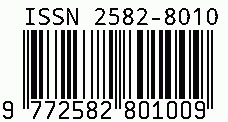
International Journal of Leading Research Publication
E-ISSN: 2582-8010
•
Impact Factor: 9.56
A Widely Indexed Open Access Peer Reviewed Multidisciplinary Bi-monthly Scholarly International Journal
Plagiarism is checked by the leading plagiarism checker
Call for Paper
Volume 6 Issue 4
April 2025
Indexing Partners



















Kautiliya’a Concept Of State
| Author(s) | Dr. Kumud Jain |
|---|---|
| Country | India |
| Abstract | Kautilya's Arthasastra (fourth century B.C.) is perhaps the most powerful composition in Political Science in the Indian Civilization. The work manages practically all parts of administration in a monarchical state. In the Indian thought process, the target of each being is the quest for dharma. State, a human ancient rarity, is established to get mankind out of the condition of nature. State empowers the residents to follow their particular dharma and to appreciate private property rights. The monarch is seen as a protector of dharma, yet not the sole translator of it. There is seperation among common and ministerial force. State has numerous independent affiliations and societies in its locale and the following polycentric plans checks the ascent of supreme force. Arthasastra imagines an immense administrative design, a perplexing duty structure, and a many-sided insight framework. |
| Keywords | Kautilya, Arthasastra |
| Field | Sociology |
| Published In | Volume 2, Issue 7, July 2021 |
| Published On | 2021-07-13 |
| Cite This | Kautiliya’a Concept Of State - Dr. Kumud Jain - IJLRP Volume 2, Issue 7, July 2021. |
Share this


CrossRef DOI is assigned to each research paper published in our journal.
IJLRP DOI prefix is
10.70528/IJLRP
Downloads
All research papers published on this website are licensed under Creative Commons Attribution-ShareAlike 4.0 International License, and all rights belong to their respective authors/researchers.

